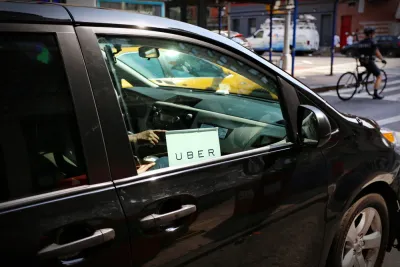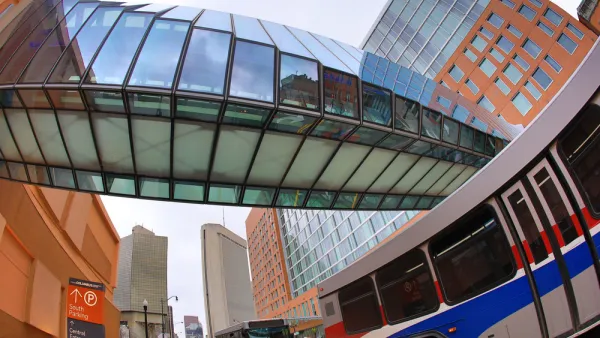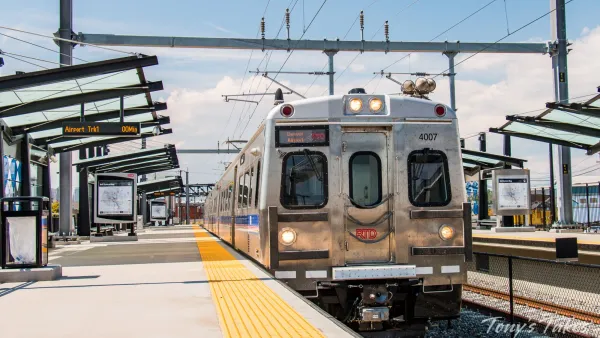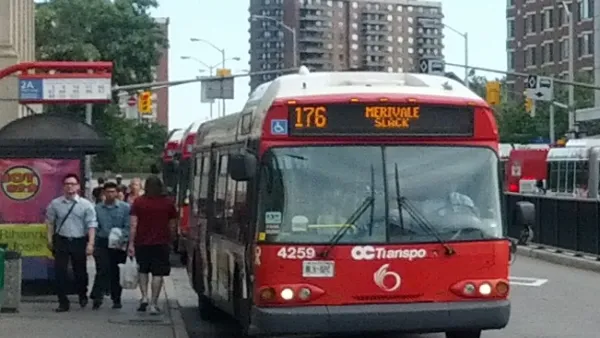Innisfil, Ontario, decided to use Uber instead of starting bus service. The program took off but so have the costs, and now cutbacks need to be made.

Laura Bliss reports on the plan in Innisfil, Ontario, a town north of Toronto, to use Uber in place of public transit. Innisfil’s population had grown in recent years, and local officials considered implementing fixed-route bus service, but the costs would have been high.
Subsidized Uber rides looked like a better option and, starting in 2017, the town started offering $3 to $5 flat fares to particular destinations and $5 fares to the rest of the area. The program has been a success, with 86,000 rides logged in 2018. But the model means costs have gone up because Uber vehicles do not have the capacity of buses.
"Only so many passengers can fit in the backseat of an Uber, and the ride-hailing company, not the town, is pocketing most of the revenue. With per-capita costs essentially fixed, the town is forced to hike rates and cap trips as adoption grows," writes Bliss. Some Innisfil residents who have come to depend on the service feel that the changes are unfair, especially because no bus alternative is available.
Cities have had various motivations for incorporating ridesharing into their public transit systems. And the outcomes have varied, with some places seeing low ridership and others, like Innisfil, struggling with rising costs. "As cities around the world turn to Uber, Lyft, and other apps as a quick fix for mobility service gaps, what’s now happening in Innisfil may be a good example of the risks," notes Bliss.
FULL STORY: ‘Uber Was Supposed To Be Our Public Transit’

National Parks Layoffs Will Cause Communities to Lose Billions
Thousands of essential park workers were laid off this week, just before the busy spring break season.

Retro-silient?: America’s First “Eco-burb,” The Woodlands Turns 50
A master-planned community north of Houston offers lessons on green infrastructure and resilient design, but falls short of its founder’s lofty affordability and walkability goals.

Delivering for America Plan Will Downgrade Mail Service in at Least 49.5 Percent of Zip Codes
Republican and Democrat lawmakers criticize the plan for its disproportionate negative impact on rural communities.

Test News Post 1
This is a summary

Test News Headline 46
Test for the image on the front page.

Balancing Bombs and Butterflies: How the National Guard Protects a Rare Species
The National Guard at Fort Indiantown Gap uses GIS technology and land management strategies to balance military training with conservation efforts, ensuring the survival of the rare eastern regal fritillary butterfly.
Urban Design for Planners 1: Software Tools
This six-course series explores essential urban design concepts using open source software and equips planners with the tools they need to participate fully in the urban design process.
Planning for Universal Design
Learn the tools for implementing Universal Design in planning regulations.
EMC Planning Group, Inc.
Planetizen
Planetizen
Mpact (formerly Rail~Volution)
Great Falls Development Authority, Inc.
HUDs Office of Policy Development and Research
NYU Wagner Graduate School of Public Service





























